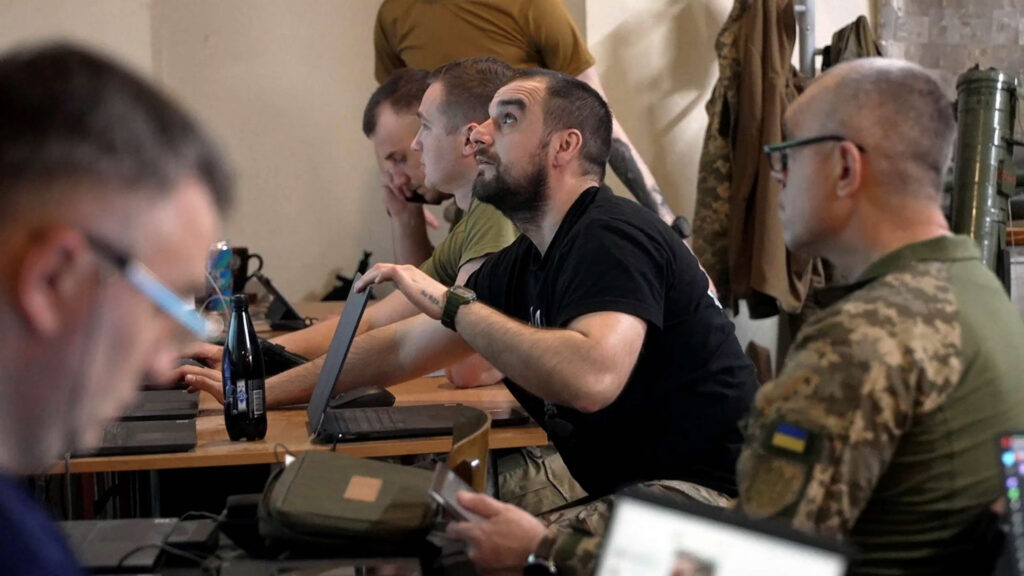It doesn’t look like much. A few cell phones. Some microphones. Maybe a half-meter-wide dish, the kind you’d expect to see in a college science lab. But make no mistake: what’s emerging from the forests and fields of Ukraine is nothing short of a technological revolution—one that’s startling NATO generals and giving Russian drone operators nightmares.
This isn’t science fiction. It’s acoustic warfare.
And at the heart of it is an unlikely cast: a voice cloning company, a handful of engineers working out of a garage, and a war that forced Ukraine to rethink how the world fights.
From Darth Vader to Drones
The story begins with Respeecher, a Kyiv-based AI startup better known for digitally resurrecting the voices of Hollywood icons. Their machine learning models, refined to mimic human speech with stunning realism, were used in major productions, including Star Wars.
Then came 2022. And with it, the full-scale Russian invasion.
Rather than flee or fold, Respeecher’s team, led by CTO Dmytro Bielievtsov, made a pivot no investor could have predicted: from entertainment to defense. Partnering with i3 Engineering’s Pavlo Tsiupka and Ukrainian defense forces, they built Zvook—the Ukrainian word for “sound.”
Zvook doesn’t fire missiles. It doesn’t jam radar. It listens.
And that’s its genius.
Listening for the Kill
Zvook’s core breakthrough lies in its ability to distinguish the sonic fingerprints of Russian missiles and drones from the chaotic background noise of war: chainsaws, cows, cicadas, wind, and shouting soldiers. At first, its detection rate was mediocre—barely a coin flip. But as battlefield audio data trickled in from the front lines, the algorithm improved rapidly.
The hardware was humble: a dish to focus sound, a shoebox-sized processor, and some highly sensitive microphones. But its software evolved fast—especially once developers began collecting live data from close-range missile flybys, solving the “domain shift” problem that had plagued early attempts trained on YouTube clips and simulations.
By the end of 2022, Zvook’s false negative rate had dropped to zero. It never failed to detect a real threat.
But it wasn’t perfect. Its range was modest—just 5 miles for missiles—and its deployment limited to a few dozen units scattered across the country. It was proof of concept, not total coverage.
Enter: Sky Fortress
If Zvook was a boutique tech solution, Sky Fortress was the mass-market version.
It didn’t have the elegance of acoustic mirrors or AI-optimized hardware. Instead, it was brutal in its simplicity: microphones duct-taped to six-foot poles, plugged into budget Android phones, networked together to listen for drones.
It sounds laughable—until you realize it worked.
Built by two Ukrainian engineers in a garage, Sky Fortress scaled what Zvook could only dream of: up to 10,000 sensors across the country, forming an acoustic web that triangulated drone and missile launches with surprising accuracy. By comparing the time it took for a sound to reach multiple sensors, the system could locate the source within seconds—just like GPS, but for enemy fire.
And the price? A mere $54 million—less than the cost of two U.S.-made Patriot missiles.
In 2024, Sky Fortress helped Ukraine intercept 80 out of 84 Russian drones in a single night. That’s a 95% hit rate using old-school microphones and off-the-shelf cell phones.
From Defense to Recon
But there’s a ceiling to what ground-based acoustic detection can do. Range and mobility are still limited. So the next step? Put ears in the sky.
That’s where Germany’s Quantum Systems comes in, equipping its Vector drones with tiny, featherweight acoustic sensors—developed by Weles Acoustics—capable of detecting enemy artillery up to 10 miles away. These drones don’t just detect—they hunt. Once they hear gunfire, they can automatically pivot their cameras toward the sound for visual confirmation, feeding coordinates to Ukrainian fire teams in real time.
It’s a reconnaissance revolution. Unlike radar, which emits signals and can be jammed or targeted, acoustic detection is passive. It listens in silence—impossible to detect, nearly impossible to disrupt.
And that changes everything.
NATO’s Quiet Wake-Up Call
Ukraine’s innovation is catching the eye—and perhaps a little embarrassment—within NATO. U.S. Air Force General James Hecker called the development “mighty impressive.” NATO’s Assistant Secretary-General Tom Goffus simply called it “crazy.”
Why the astonishment?
Because Ukraine managed, in just over three years of war, to develop and deploy three distinct generations of acoustic defense systems—Zvook, Sky Fortress, and now mobile drone platforms. Meanwhile, NATO’s traditional procurement cycles still take five to ten years just to approve a radar upgrade.
And Ukraine did it with pennies on the dollar.
What’s even more staggering is the implication: these low-cost, AI-powered systems aren’t just defending territory—they’re pointing to an entirely new way of thinking about modern warfare.
The Limits—and the Promise
No system is flawless. Zvook and Sky Fortress still struggle in poor weather or noisy environments. The Vector drones can’t fly forever, don’t carry weapons, and could be targeted by Russia’s increasingly sophisticated anti-drone tactics. Range remains a constraint—15 kilometers at best.
But Ukraine’s progress hints at something NATO cannot ignore: the defense future may not belong to billion-dollar missiles and enormous radar arrays—it may belong to teams of scrappy engineers with a microphone and a laptop.
The Bigger Picture
The lesson isn’t just about tech. It’s about agility. Ukraine’s systems didn’t emerge from bloated bureaucracies or endless defense contractor bidding wars. They came from necessity. They came from war. And, crucially, they came from small teams, moving fast, iterating often, and deploying prototypes in real-time combat zones.
As NATO and its member states mull over their next budgets and procurement strategies, the message from Ukraine couldn’t be clearer:
Innovation doesn’t wait. And in modern war, speed is survival.



